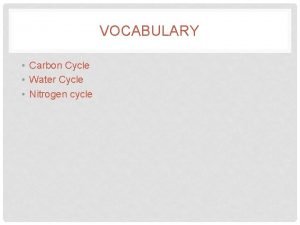Communication The Communication Cycle The Communication Cycle Why









- Slides: 9

Communication The Communication Cycle

The Communication Cycle • Why do people often misunderstand each other? • In complex communication the message that a person receives may not be the same as the message that was intended. • The communication cycle is a process for building understanding between people and preventing misunderstandings

Communication Cycle 1. Idea occur 2. Message coded 3. Message sent 4. Message received 5. Message decoded 6. Idea understood

The Process of Expression and Interpretation • This process should involve the following 6 steps • As we communicate with other people we become involved in a process of expressing our own thoughts and interpreting others understanding of what we are communicating

The Process of Expression and Interpretation Step 1: expressing our thoughts Step 2: watching the other person’s nonverbal response and body language Step 3: interpreting the other person’s body language and trying to work out what they are thinking

The Process of Expression and Interpretation cont’d • Step 4: listening to their response to what we have said • Step 5: trying to make sense of their response • Step 6: expressing new ideas to try and clarify our ideas

Listening • The communication cycle requires professionals to have: • advanced listening skills and • the ability to check their of others’ responses understanding

Listening • Listening is not the same as hearing sounds. • Listening involves – hearing another person’s words – thinking what they mean – thinking what to say back to the other person This process is called Active Listening

Listening • Skilled listening involves: – looking interested and ready to listen – hearing what is said – remembering what is said – checking understanding with the other person Good listeners will also make sure their nonverbal communication demonstrates interest

















